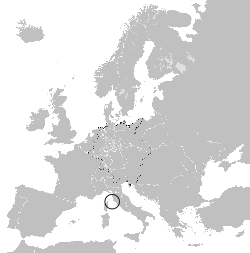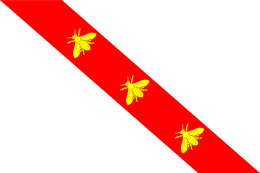Principality of Elba
| Elba | ||||||||||
| Principato d'Elba | ||||||||||
| ||||||||||
| ||||||||||
 Location of the Principality of Elba within Europe | ||||||||||
| Capital | Portoferraio | |||||||||
| Languages | Italian | |||||||||
| Religion | Roman Catholic | |||||||||
| Government | Non-hereditary Monarchy | |||||||||
| Prince of Elba | ||||||||||
| • | 1814-1815 | Napoleon Bonaparte | ||||||||
| Historical era | Napoleonic Wars | |||||||||
| • | Treaty of Fontainebleau | April 13, 1814 | ||||||||
| • | Napoleon's Departure | February 26, 1815 | ||||||||
| • | Congress of Vienna | June 9, 1815 | ||||||||
| Area | ||||||||||
| • | 1814 | 224 km² (86 sq mi) | ||||||||
| Population | ||||||||||
| • | 1814 est. | 12,000 | ||||||||
| Density | 53.6 /km² (138.7 /sq mi) | |||||||||
| Currency | French Franc | |||||||||
| ||||||||||
The Principality of Elba (Italian: Principato d'Elba) was a non-hereditary monarchy established by the Treaty of Fontainebleau of 11 April 1814.
Sovereignty over the island, which until then had been part of the French département of Méditerranée, was given to Napoleon I of France after his abdication following the War of the Sixth Coalition. Article 3 of the Treaty stipulated that Elba was to be "an independent principality possessed by him in complete sovereignty and as personal property".[1] His rule was to persist until his death, at which point control of the Principality would return to Tuscany. The former emperor was also granted a stipend of two million francs per year to be paid by France.
On 26 February, after a rule of 9 months, Napoleon escaped from Elba and landed in southern France to lead the French again, beginning the War of the Seventh Coalition. After his defeat at the Battle of Waterloo, the delegates of the Congress of Vienna agreed to exile Napoleon to the Island of St. Helena in the South Atlantic, and the Principality was returned to the Grand Duchy of Tuscany.

References
- Gruyer, Paul (1908). Napoleon, King of Elba. London: William Heinemann.

